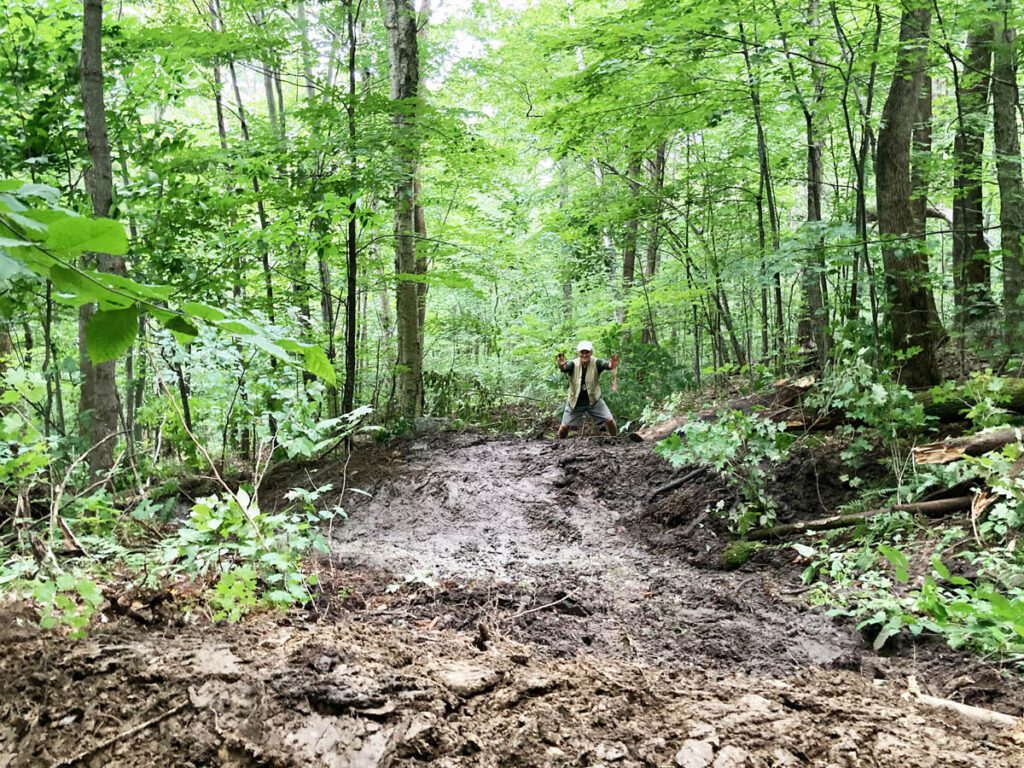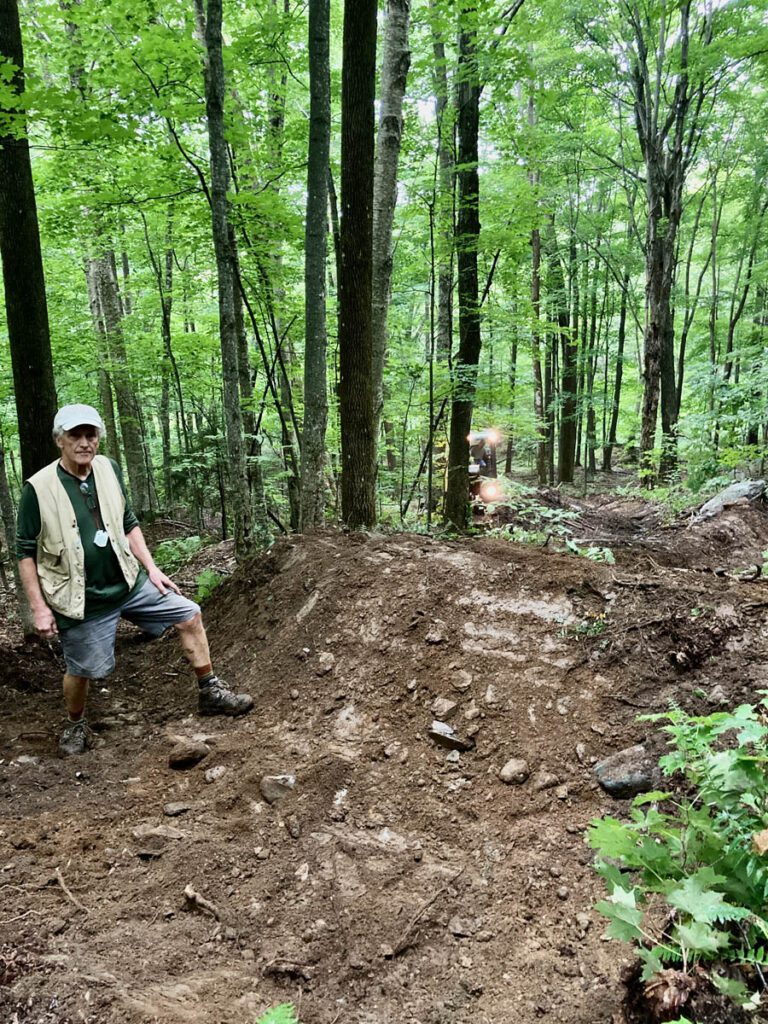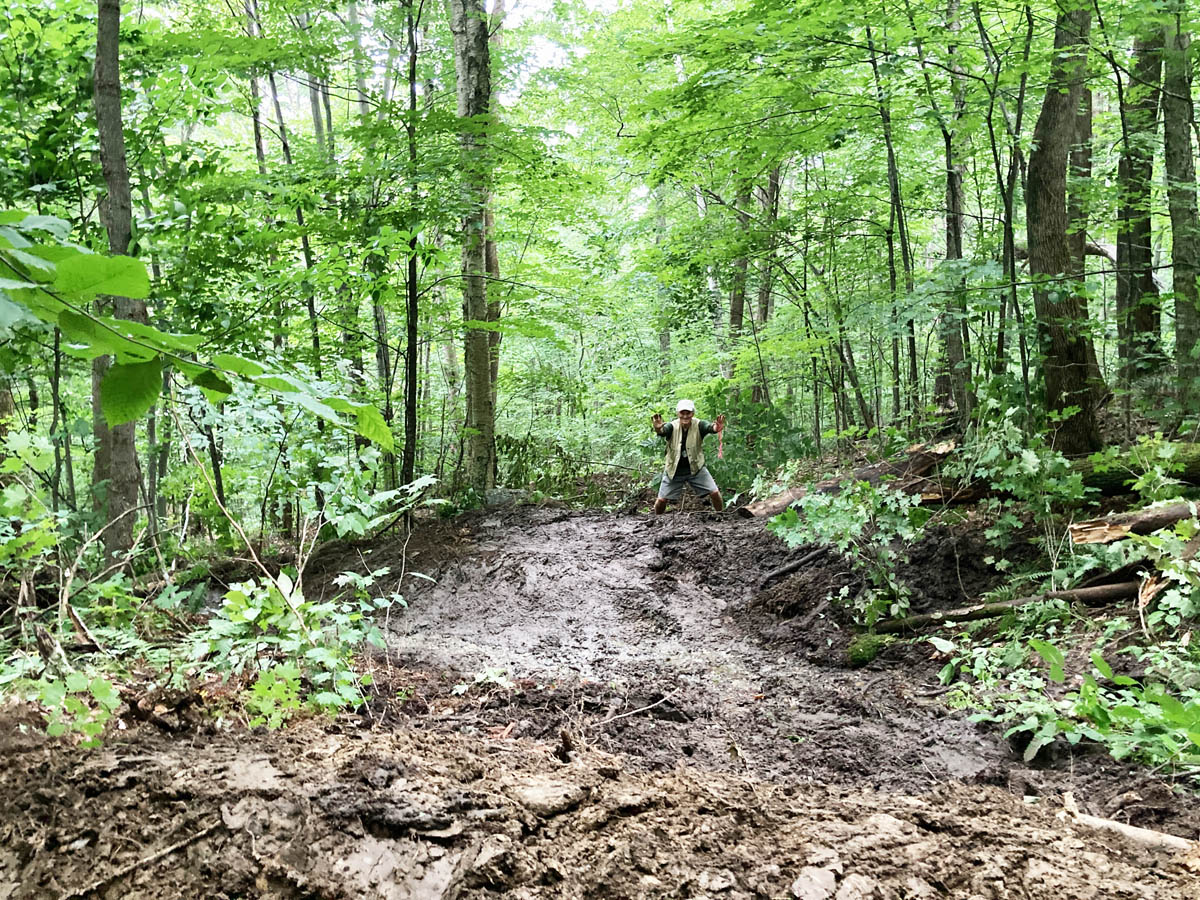
Building Resiliency One Waterbar at a Time
As climate change models have predicted, Vermont’s storms this summer have been big, powerful, and frequent. We’re experiencing what that means for our homes and communities, and for our road networks and the waterways that receive the copious runoff and sedimentation when those roads wash out.
In Vermont, thousands of miles of forest roads and skid trails cross our mountainous landscape on both public and private lands. Those upland forests are headwaters to the rivers that flow through—and increasingly flood—our towns and cities. During storms, runoff from these forest roads scours away nutrient-rich soils that nurture upland forests and sends them into rivers and lakes, where these same nutrients are potent pollutants.
The great news is there’s plenty we can do to help. Every forest landowner—whatever your ownership objectives and management approach—can stabilize forest roads and trails. Doing so will slow, spread, and sink the flow of stormwater, which will safeguard and improve water quality, forest health, and flood resilience.
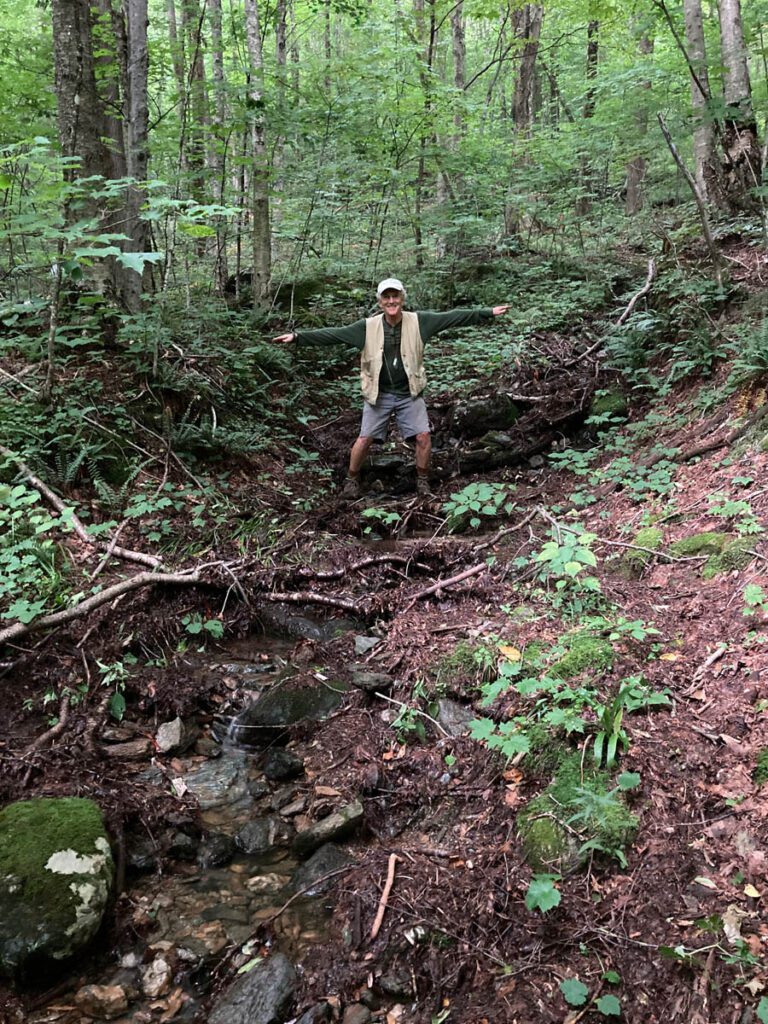
Here’s how:
1. Close out steep roads. Truck roads and skid trails built at grades over 20% are very difficult to stabilize and maintain over time and should be closed and relocated as needed. Closing a road means more than simply blocking vehicle access. Without significant erosion control structures, a steep road will continue to actively erode indefinitely. You’ll find introductory information about erosion control structures in Acceptable Management Practices (AMPs) For Maintaining Water Quality on Logging Jobs in Vermont, created by the Vermont Department of Forests, Parks, and Recreation. Though some of the AMP recommendations for water erosion control structures are outdated, they offer a starting point.
We’ve been closing steep access roads on Vermont Family Forests lands over the past few years. Last year, we hired Nezin Excavating to install 80 super-sized waterbars, also known as tank traps, on land we recently purchased, which came to us with very steep, actively eroding logging roads. With the help of a crew from the Vermont Youth Conservation Corps, we then further stabilized bare mineral soils by laying logs and brush across the contours of the road cut.
This summer, we again turned to Nezin Excavating to stabilize an old access road that traverses a piece of VFF land in Lincoln we call “Abraham’s Knees,” since the parcel rises up the side of Mount Abraham in a series of steps, or knees. Portions of the access road exceed 35% slope, and erosion had turned steep sections into deep gullies, some scoured more than four feet below the original road grade.
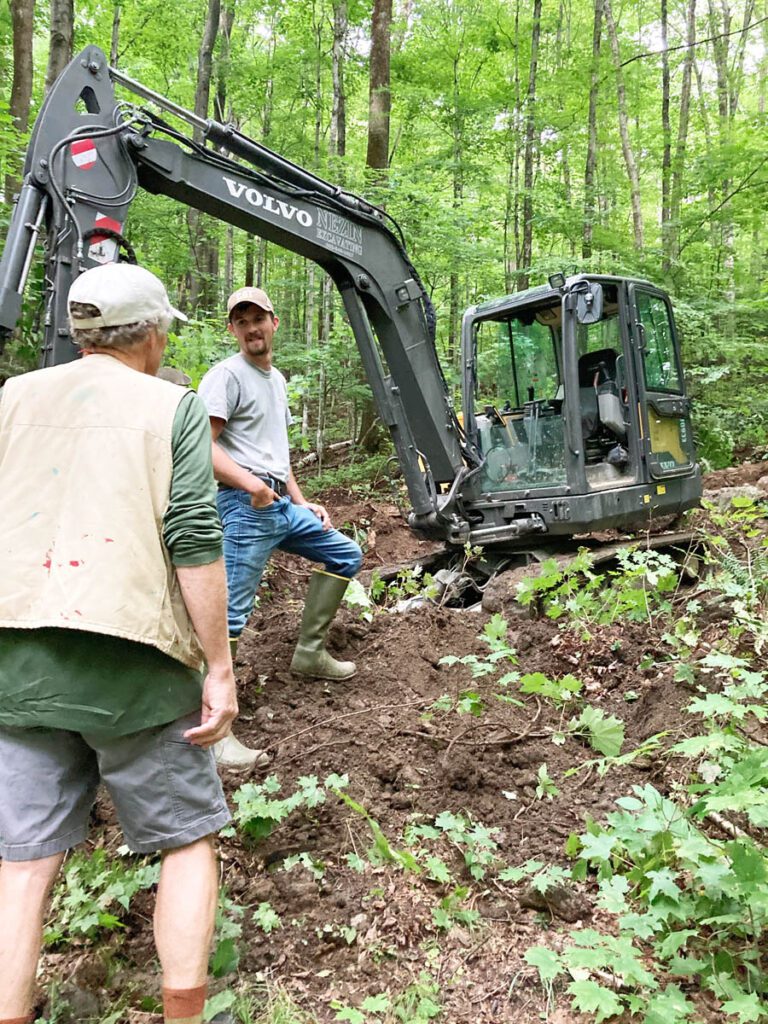
Operating a small, nimble, tracked excavator, Andrew Cousino created 50 erosion control structures—ranging from moderately contoured broad-based dips (which are only recommended and effective on slopes less than 10%) to deep tank traps on steep sections—to send water off the road and back into the forest.
2. Carefully close out any temporary roads. Sometimes, during a timber harvest, logging operators create temporary roads that provide adequate short-term access when used under optimal conditions. Soon after harvesting is completed, ruts should be filled and smoothed and waterbars should be installed at proper intervals. Barriers such as boulders and felled trees should be installed as needed to prevent any post-harvest uses that create erosion, damage waterbodies, and reduce water quality.
3. Improve the access you’re proud of. Once you’ve put to bed the steep roads in your forest, you can focus on the access roads you’d like to maintain—roads that are less than 10% grade, winding through the forest as lines of grace. Such roads are great for you and great for the forest. They are beautiful, durable, and stable—contoured to handle the existing and predicted realities of powerful storms.
Properly installing erosion control costs money. Cost-share funds are available from the Natural Resources Conservation Service, and it’s our sense that, in this time of climate crisis, cost-share funds should be dedicated first and foremost to forest road stabilization, rather than to thinning woodlots and/or controlling invasives.
No one owns Vermont’s precious waters—we the people of Vermont hold the water collectively, and the State of Vermont serves as the appointed trustee of that common asset. But the urgency of climate-change-induced storms is calling all of us to lend a hand in our home place. As the old Irish saying goes, the greatest soul restoration is that which is done on behalf of the land.
If you want to improve your forest access, but aren’t sure where to start, give us a call. Also, we’re planning to hold a workshop on the how-to’s of stabilizing forest roads. Let us know if you’re interested. May the Forest—and its life-giving soils—be with you!
